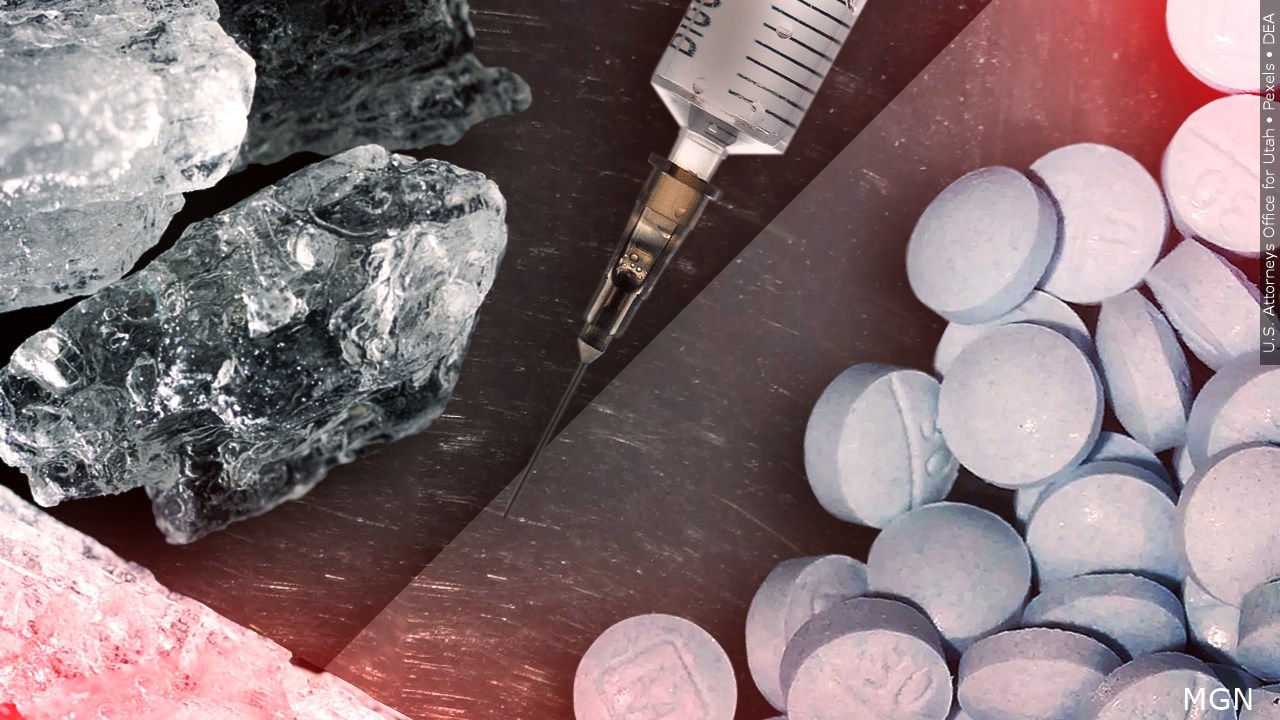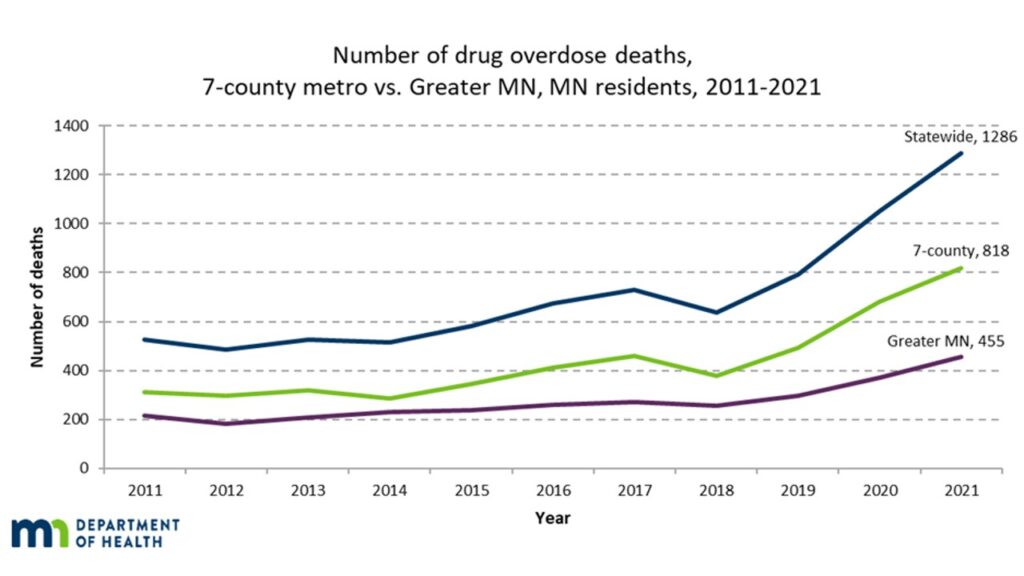Drug overdose deaths reached record high in Minnesota in 2021, MDH says

(U.S. Attorneys Office for Utah / Pexels / DEA / MGN)
More people died from drug overdoses in Minnesota last year than in any other year on record.
The Minnesota Department of Health says 1,286 overdose deaths were reported in the state last year, a 22% increase from 2020, and an average of more than three people per day. And for every overdose death, MDH says there were 10 nonfatal overdoses last year.
MDH says the increasing prevalence of fentanyl is believed to be part of the reason for the jump in overdose deaths, which continue to rise across the country.
The department also noted that last year was the first time since 2014 that a larger percentage increase in overdose deaths in Greater Minnesota (23%) than in the Twin Cities metro area (20%). However, the metro still accounted for nearly two-thirds of the overdose deaths (818 vs. 455).

“This increase in drug overdose deaths is alarming, but there are things we can do about it,” MDH Commissioner Jan Malcolm said in a statement. “One important step is to expand programs that make it easier for people to access naloxone – a medication that can reverse overdoses and save lives.”
Additionally, MDH says preliminary data shows:
- A 35% increase in overdose deaths involving opioids in 2021.
- A 34% increase in overdose deaths involving methamphetamine in 2021.
- An 81% increase in overdose deaths involving cocaine in 2021.
- A 48% increase in deaths involving synthetic opioids in 2021.
- 90% of all overdose deaths involving opioids included fentanyl in 2021.
Health officials say a dose of fentanyl as small as three grains of rice can be lethal, and the synthetic opioid continues to become more common in illicit drugs, often laced in other drugs like cocaine and meth.
Resources such as fentanyl test strips are available through community partners and can help prevent overdose deaths, MDH says, and the naloxone finder can help locate the medicine that can treat drug overdoses.
Nonfatal overdoses dropped by 16% last year in the metro area and 6% in Greater Minnesota. Also, nonfatal overdoses involving at least one opioid dropped by 24%, MDH says, and those involving at least one stimulant dropped by 11%.